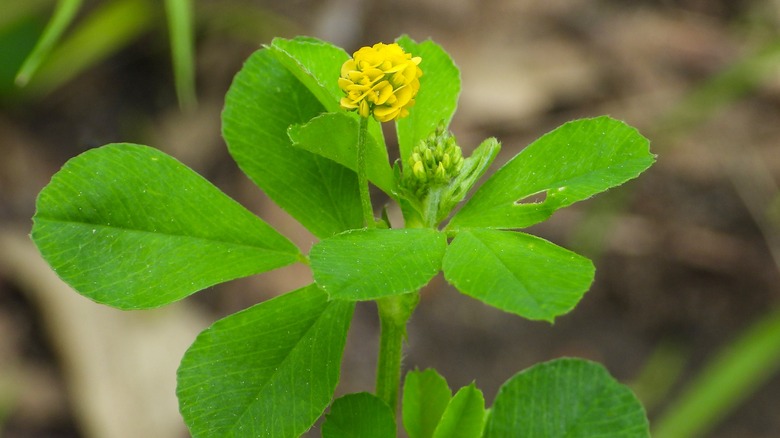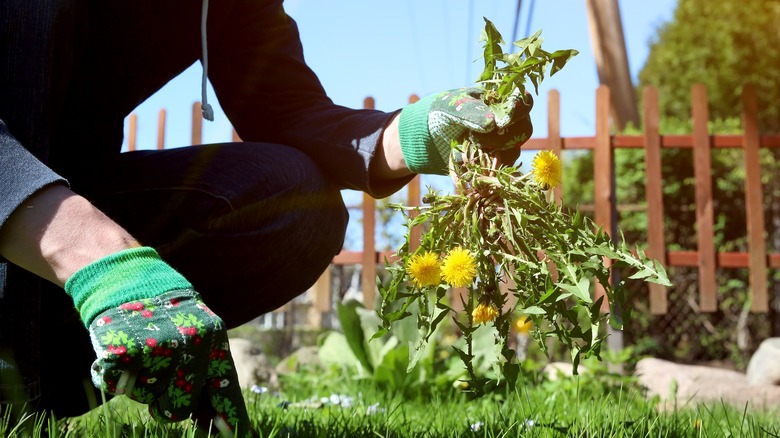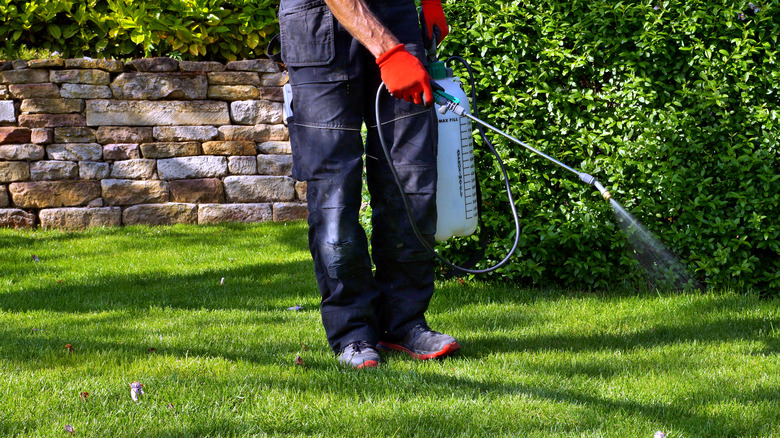How To Keep Black Medic Weeds Out Of Your Lawn
We may receive a commission on purchases made from links.
Ah, the highs and lows of lawn care! Picture your yard as an oasis of serenity and beauty, though occasionally marred by weed infestations. In the list of such invaders, one unassuming yet subtly damaging character stands out: black medic. At first glance, the black medic could almost pass off as a charming addition to your lawn. An annual weed that sprouts round yellow flowers in clusters resembling clovers, this botanical hitchhiker is not without its allure. You've probably witnessed the blossoms transition into black kidney-shaped seedpods. And true to its legume lineage, it contains nitrogen fixation capabilities.
However, there's more to this botanical invader than meets the eye, for it could be plotting its takeover. The weed is notorious for forming dense mats that can suck the life out of your vibrant turf, with the assault mobilized by far-reaching tap roots. Talk about a veritable wolf in sheep's clothing. So, how do you keep black medic weeds from your lawn? There's no known biological weed control method for this green interloper. Fortunately, multiple physical and chemical strategies can turn the tide in your favor — from diligent weeding and soil amendment to careful use of pre- and post-emergent herbicides (and even an organic option for the green-thumbed gardeners).
Physical control of black medic weed in lawns
Hand-pulling is among the primary options for physical control of black medic weed. Tackle the task when the soil is wet, preferably after rain. Water softens the soil, enabling you to unroot those stubborn black medics quickly and neatly. Irrigation will suffice if Mother Nature is not playing ball. But what if bending, kneeling, and pulling aren't your cup of tea? A tool like Grampa's Weeder, available for $39.99 on Amazon, can be handy. But when should you weed your lawn? Spring into action when the black medic weeds are young, ideally before they flower.
Your next course of action is dictated by the black medic's fondness for compacted soils. Amending your lawn soil comes in here. Start with aerating, punching tiny holes throughout your lawn to allow air and water to penetrate and rejuvenate the compacted soil. Complement this with a dash of organic matter, enriching the topsoil to foil the opportunist's game plan.
However, your victory against black medic weed relies on consistent technique and nurture, not a one-time magic bullet. As such, use superior-quality fertilizers to nurture thick, robust grass already acclimatized to your locale. Maintaining the two-third rule, where you retain a good one-third of the grass blade when mowing, helps boost the lawn's immunity against weeds. Pair that with the use of sharp mower blades that cleanly cut (rather than injure) your grass to set up your lawn for victory over black medic weeds.
Best herbicides for black medic weed control
Pre-emergent herbicides allow you to assert authority before black medic weeds take root in your lawn. These products strike at the heart of the weed from the onset, stopping its germination. The best pre-emergent herbicides for black medic weeds boast ingredients like dithiopyr, oxyfluorfen, and oryzalin. A worthy contender would be the dithiopyr-laced Dimension 2EW Herbicide on Walmart or Rout Ornamental Herbicide (which combines the power of oxyfluorfen and oryzalin) from Pestrong.
But what if black medics have already set up camp? Post-emergent herbicides featuring triclopyr, 2,4-D, dicamba, fluroxypr, or MCCP can save the day. Examples include Q4 Plus Turf Herbicide on DoMyOwn and Millenium Ultra 2 from Advanced Turf Solutions. You want to time your attack when the black medic weeds are small and before they flower and rain seeds across your lawn for another raid. That's when they are more vulnerable to damage by weed killers.
When wielding a dicamba-containing herbicide, steer clear of tree and shrub root zones, as the product can lead to catastrophic damage to your prized green guardians. Your attack plan can take two formations: spot treatment, focusing your firepower on individual enemy weeds, and blanket spray for full-scale invasions, covering every square inch of your territory. When blanket spraying, stick to selective post-emergent herbicides to avoid collateral damage on your turf. You could also consider herbicidal vinegar, a more potent cousin of household vinegar boasting an acetic acid content of 20% to 30%.


